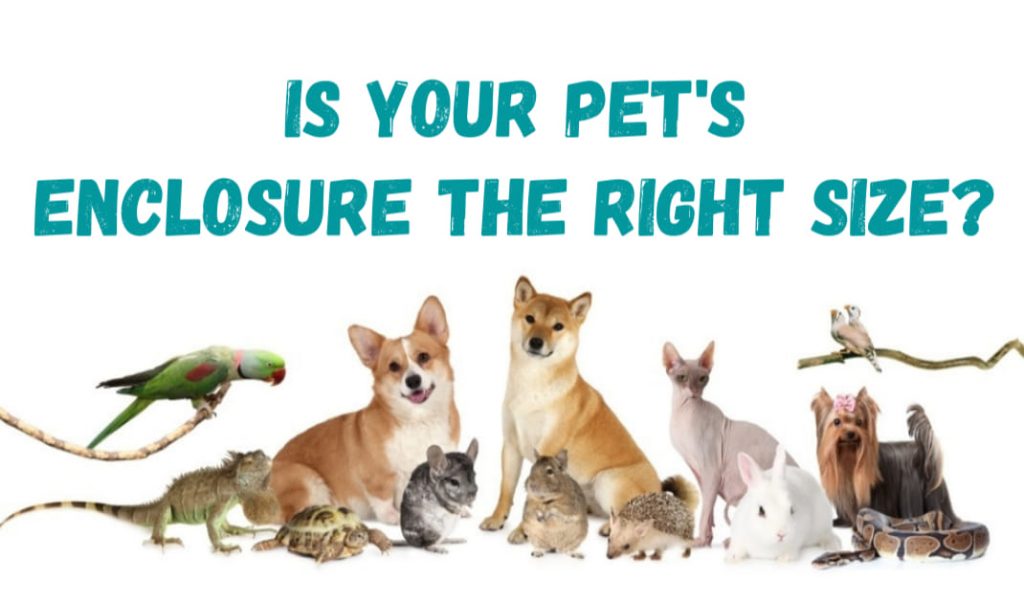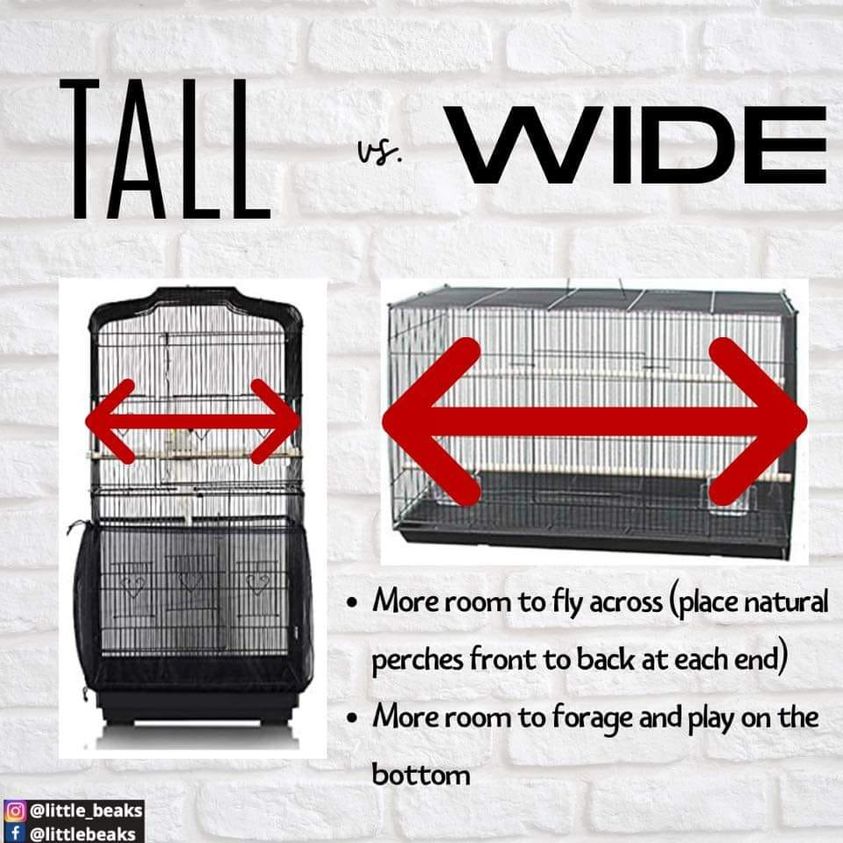
ANIMALS 101 – ARE YOU PROVIDING THE BEST POSSIBLE ENCLOSURE FOR YOUR PETS?
Whichever kind of pet you choose to be a guardian of and care for, it is crucial that you do proper research about all their needs, especially their enclosure size and enrichment. The enclosure, sadly in most cases, is the area in which they will spend most of their time (hopefully not), so it is important that it meets their needs!
ENCLOSURE in relation to animals means any container, aquarium, aviary, paludarium, riparium, vivarium, terrarium or other such fenced or enclosed area used for accommodating, keeping or exercising animals. It includes indoor, outdoor and night structures.
Last week we looked at the different forms of animal enrichment which includes their physical habitat (enclosure/cage). Enrichment is also known as environmental or behavioural enrichment and is the process of providing captive animals with some form of stimulation in order to encourage natural behaviours. This helps to improve or maintain their physical and mental health. It basically includes the following: Social, Cognitive, Physical Habitat, Sensory and Food.

All 5 FREEDOMS OF ANIMAL WELFARE should be taken into account when you look at the enclosure you choose:
1. Should provide access to food and water.
2. Should not create discomfort.
3. Should be safe, not causing disease, injury or pain.
4. Should allow them to express natural behaviour.
5. Should not cause fear or distress.
Also read; ANIMALS 101 – FIREWORKS AND PETS
GENERAL GUIDELINES FOR ENCLOSURES
- Acceptable size of enclosure depends on the type and size of animal and the amount of time the animal would be spending in the enclosure.
- The animal must be able to stretch out in full length of their body.
- Be made from a correct and strong, durable material.
- Have correct landscaping/flooring/bedding/vegetation/substrate for the particular animals’ needs.
- Be the correct shape for the particular animal – horizontally & vertically
- Be adequate size to allow comfortable movement (sit/lie down/stand/turn/walk normally/climb/swing) for the animal.
- Be secure to prevent escape.
- Ensure that it is safe from hazards that might cause injury.
- Be kept in a clean condition for the safety of the animals and humans.
- Provide shelter from the elements & cover to hide.
- Include access to daily fresh food and water which is easily accessible.
- Limit any unnecessary stress for the animal.
- The bigger the enclosure the better, unless it causes stress, in the case of some species.
- Provide a full range of the appropriate natural environment like adequate ventilation, humidity, temperature and lighting (natural lighting for nocturnal animals) which is safe for the particular animal.
- Should have proper drainage.
- Floors should be non-slip.
- If the base of an enclosure is not rendered waterproof, a raised sleeping board which will enable the animal to keep dry should be provided in every enclosure.
- Roofing should be weatherproof.
- Provide the correct enrichment, including, but not limited to climbing, swinging, bathing (water and sand bathing), scratching, probing, claw sharpening, rubbing.
- Provide escape possibilities for the animals, especially the female and young, if housed with others from the same or different species.
- Provide night, nesting and indoor enclosures for animals kept outdoors which allows for all animals to move freely and lie down simultaneously together. This might be dependent on the species and circumstances.
- All perches or resting place must be the correct size for the particular animal and or species.
- Provide dividing or separating possibilities if a spare enclosure is not available.
- Not be housed close to animals which may cause stress or see them as prey.
Are you meeting these criteria for your pet’s enclosure?
LET’S LOOK AT BIRD ENCLOSURES FOR EXAMPLE

Above is an example of something most people do not think of. Birds fly more horizontal (wide) than vertically (tall), therefore a cage, with more horizontal space is required. This way there is more room to fly across and more room to forage and play on the bottom. If a bird can’t expand their wings in full length without touching the sides nor be able to fly in its cage, then the cage is definitely not large enough! Round cages for example can pinch their feet where the cage bars becomes smaller, so it can be a safety issue.
Just because a pet shop sells a cage marked as an “African Grey” cage, does not mean it is the right size for an African Grey! Pet shops are in it for profit, not for improving the lives of animals, otherwise they would not be selling them, fuelling the massive overpopulation crisis and encouraging impulse buy without proper homing!
ENRICHMENT IDEAS FOR BIRDS
Birds or any animal for that matter, aren’t meant to sit alone in a cage with nothing to do all day and rarely the cages are the correct size.
- Rotate your birds’ toys.
- Open the cage.
- Encourage foraging.
- Play music.
- Teach tricks.
PERCHES
Birds spend all their time on their feet, so feet health is very important! Having the wrong perches can drastically increase injury risk and health concerns. It is important to understand your bird’s perch needs, including the right materials & size specifically for your birds. The right size general rule is the toes should go around the perch only 2/3 or 3/4. If you only have one size of perch, that would need to be the right size. If you have more perches, make sure the perch which they spend the most time on, is the right size and made of the best material.
You can follow the 4-3-2-1 rule from staravian.org.
4 – different size perches
3 – different types of safe material
2 – action perches to help with balance and exercise (swings, ladders etc.)
1 – flat surface or shelf that will allow your bird to put their feet completely flat.
Read more on perches.
PERCH PLACEMENT
- Perches should be placed in front of food and water dishes so the bird can reach the dishes easily.
- To avoid droppings contaminating the food or water, do not place perches directly above the dishes.
- Always place a perch so that the bird’s tail will not touch the side of the cage when perched on it.
- Place perches at various levels within the cage.
- Avoid using too many perches, which could prevent the bird from flying. A bigger cage might be the better choice, not fewer perches.
- Parrots feel insecure when they are at or below eye level. So, for fearful parrots, try to position their cage so that their perch is about six inches above your eye level. The bars of the cage give fearful parrots a sense of security.
- For aggressive birds, experiment with perches about four inches below your eye level.
- Remember to scrub your perches regularly.
DECLARATION – For many reasons, we do not support any animals in cages nor keeping any wildlife or exotic animals in captivity, as pets. DON’T BE CAPTURED BY CAPTIVITY, they belong in the wild. We will fight not only until cages are comfortable, but until they are empty!
If you can no longer take care of any animal, including wildlife or exotic pets, please surrender them to your nearest SPCA or reputable animal specie specific rescue. They will make sure these animals get the care they need. If you are unsure about the care, please contact us so we can refer you to the right organisation.
Thank you for tuning in! Next week we will look at the do’s and don’ts of leaving pets home alone.
WHEN YOU KNOW BETTER, DO BETTER!